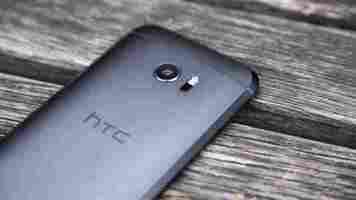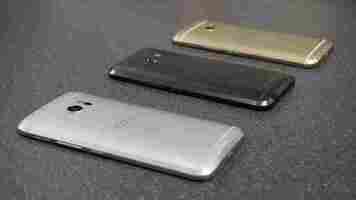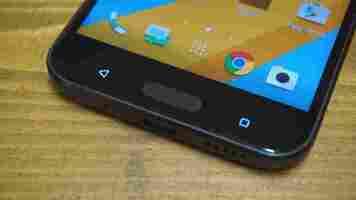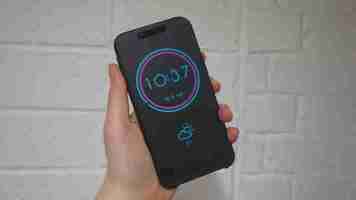HTC 10 review: 2018 is time to move on
When it was first released in 2016, the HTC 10 was a triumphant return to form for HTC. It didn't sell hugely well, unfortunately, due to optimistic pricing that pegged it against the Samsung Galaxy S7 – a phone that had it beat in almost every way. But it was a fine handset, all the same.
So should you buy one if you see a deal in 2018? Probably not, at this point – it's getting a little bit long in the tooth, even if it will be getting Android Oreo soon (early attempts to roll it out in January have been pulled back). The HTC U11 , which is now available for around £500 thanks to the slightly upgraded U11 Plus , would be our pick of HTC handsets, but you could also consider the Samsung Galaxy S8 or the OnePlus 5T .
Nonetheless, if you're looking to be convinced, Katherine's original review continues below.
Released in March 2015, the HTC One M9 was a disappointment, as its camera was dreadful, its battery life was severely sub-par and its identical design to its predecessor, the One M8 , meant it was left standing in the M8's shadow rather than stealing its own piece of the limelight.
It was only when HTC released its second-tier One A9 in September 2016, that the Taiwanese smartphone manufacturer felt back on track. Then came the HTC 10, the 2016 flagship smartphone which had a striking resemblance to its A-series sibling. Both share the same slim antenna lines, which run across the top and bottom of a full metal unibody, and they each have an almost identical fingerprint sensor incorporated into the home button on the front. However, it doesn't take much to see where the HTC 10 breaks away from the A9's school of design, as those huge, chamfered edges look absolutely stunning against the A9's flat, uniform finish, and the way they catch the light immediately draws the eye.
Since we reviewed it in 2016, the HTC 10 can now be found for a reduced price of £480, making it an even better buy. Read our initial review below.

HTC 10 review: Design and fingerprint sensor
The Glacier Silver model shows it best, revealing at least three different shades of silver when placed face down on a table, but the Topaz Gold and Carbon Grey are both equally handsome in their own way. Regardless of which one you pick, it's definitely more attractive than LG's rather plain-looking G5 , and its all-metal exterior looks a damn-sight smarter than the fingerprint-marred glass rears of Samsung's Galaxy S7 and S7 Edge handsets. This is what a flagship smartphone should look like – premium, stylish and not looking like it's been through a hedge backwards.
It's slim, too, measuring just 3mm at its thinnest point. Admittedly, this stretches to a rather chunky 9mm at its centre, but its simultaneously rounded and angular back feels great in the hand. It provides just the right amount of grip without feeling too sharp, and its skightly heftier weight of 161g makes it feel secure to hold and sturdily built.

The HTC 10 isn't just a better-looking phone than the One A9, though, as it also addresses some of that handset's major shortcomings. For instance, despite having a fingerprint sensor that doubled up as a home button, the One A9 still had onscreen buttons for the Back and Recents keys. The HTC 10, however, finally makes a return to capacitative buttons, freeing up more space on the screen for your apps and video files while also making a lot more sense than the One A9's mixed setup.
That said, I still don't find front-facing fingerprints sensors hugely practical, as they can be a bit of a pain to reach when using the phone one-handed. Indeed, the HTC 10 often didn't recognise my thumb when I placed it on the sensor horizontally, instead demanding that I have the full, central portion of my thumb firmly on the main contact point.
It worked better when placing my thumb on it vertically, but it's still nowhere near as convenient as other rear-facing sensors I've used, such as the one on the LG G5. That said, having one on the front still has its uses. It's much easier to use when the phone's lying flat on a table, for example, and it's more convenient for making Android Pay payments.

HTC 10 review: Ice View case
HTC's official case has also been revamped for the HTC 10, so say goodbye to Dot View and hello to Ice View. Instead of opting for a retro, pixellated look, the semi-transparent covers of HTC's new Ice View cases can now use the screen's full resolution to show smooth, rounded graphics detailing the time, date and weather, as well as app notifications, phone call histories and entire text messages (as long as you agree to letting Ice View bypass your other security settings, of course).
You can also double swipe down on the IceView case to launch the camera. However, this whole process is a bit cumbersome, as you'll still need to unlock the phone if you've enabled its fingerprint sensor, for instance, and it also only works if you double-swipe as soon as you pick up the phone off the table. If I pressed the power button to show the time, date and weather, the camera shortcut wouldn't activate when I swiped, so it's unlikely to save you much time in the long run.

Still, camera shortcut aside, the case fits fairly snuggled, yet still provides plenty of clearance for the top-facing headphone jack and USB Type-C port on the bottom, and its smooth plastic feels comfortable in the hand. Likewise, its equally contoured edges help prevent it from slipping out of your palm when using it one-handed. It might not be quite as convenient as the always-on displays of its competitors, but there's no denying it's a welcome upgrade over the old DotView cases.
HTC 10 review: Performance
One thing the HTC 10 isn't short on is raw processing power, as it's got one of Qualcomm's brand-new quad-core 2.3GHz Snapdragon 820 chips inside it. It's also got 4GB of RAM, putting it neck-and-neck with the LG G5. However, it couldn't quite match the G5 when it came to running our Geekbench 3 benchmarks, as the HTC 10 only scored 2,022 in the single core test and 5,091 in the multicore test, putting it 300 points behind the G5 in each one. This makes it the slowest smartphone out of the big three, as Samsung's Galaxy S7 was even further in front for the multicore test, finishing with a huge score of 6,437.
Not that you'd probably notice the difference in everyday use, however, as the HTC 10 still felt incredibly quick and nippy when browsing the web, scoring an impressive 1,503 in Peacekeeper, and swiping through its Android homescreens was slick and responsive.
Fortunately, the HTC 10 was able to match both of its competitors when it came to graphics performance, producing a huge 2,946 frames (around 48fps) in the offscreen GFX Bench GL Manhattan 3.0 test. This is a fraction faster than the G5, but it's miles out in front of the Galaxy S7, which scored an average of just 38fps.
HTC 10 review: Battery Life
The HTC 10 also nudges ahead of the G5 when it comes to battery life, too, which is welcome news after the somewhat abysmal stamina of its M9 predecessor. In our continuous video playback test with the screen set to our usual measurement of 170cd/m2, the HTC 10's 3,000mAh battery lasted a respectable 12h 08m, which is just under an hour more than the G5.
It still can't touch the S7's monstrous battery life of 17h 48m, but this should be more than enough to make it through the day. It's also easy to top-up thanks to its USB-C port and Quick Charge 3.0 technology, as it can reach 50% in just half an hour, making it just as fast as the G5. I'm also pleased to see that HTC's included a USB-C to USB-A cable in the box, meaning you can use it with other USB plugs should you forget to take your bundled Quick Charge plug with you on the move. Continues on Page 2
HTC 10 SIM-Free Smartphone - Carbon Grey £149.18 Buy now